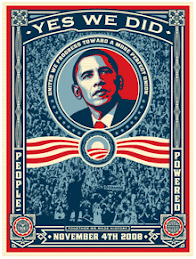 One in every 150 child is diagnosed with autism and every 20 minutes there is a child diagnosed with autism. At the moment Autism is on the top 3 of the 10 developmental disorders.
One in every 150 child is diagnosed with autism and every 20 minutes there is a child diagnosed with autism. At the moment Autism is on the top 3 of the 10 developmental disorders.On December 18, 2007, the United Nations General Assembly adopted resolution 62/139, tabled by the State of Qatar, which declares April 2 as World Autism Awareness Day (WAAD) in perpetuity. Her Highness Sheikha Mozah Bint Nasser Al-Missned, Consort of His Highness Sheikh Hamad Bin Khalifa Al-Thani, the Emir of the State of Qatar, supported the campaign for a World Autism Awareness Day through the current 62nd UN General Assembly Session, garnering consensus support from all United Nations Member States.
The United Nations Secretary-General Ban Ki-moon welcomed the UN World Autism Awareness Day last year. Mr.Ban ki-moon said: 'As we advance the universal human rights of children with disabilities, let us focus on building enabling environments for them to prosper as future members of their communities, citizens of their countries and as fully-fledged members of the global community. Let us pay tribute to the courage of children with autism and their families, as they strive every day to confront the disability with a powerful combination of determination, creativity and hope. Let us empower them and respond to their needs today, so as to make our societies more accessible, enabling and empowering for all our children tomorrow.
This UN resolution is one of only three official disease-specific United Nations Days and will bring the world's attention to autism, a pervasive disorder that affects tens of millions. The World Autism Awareness Day resolution encourages all Member States to take measures to raise awareness about autism throughout society and to encourage early diagnosis and early intervention. It further expresses deep concern at the prevalence and high rate of autism in children in all regions of the world and the consequent developmental challenges.



 In addition to the UN member states, a number of NGOs promoting clean water and sustainable aquatic habitats have used World Day for Water as a time to focus public attention on the critical water issues of our era.
In addition to the UN member states, a number of NGOs promoting clean water and sustainable aquatic habitats have used World Day for Water as a time to focus public attention on the critical water issues of our era.  In 2009, the theme for World Water Day is "Shared Water - Shared Opportunities". Special focus will be placed on transboundary waters. Nurturing the opportunities for cooperation in transboundary water management can help build mutual respect, understanding and trust among countries and promote peace, security and sustainable economic growth.
In 2009, the theme for World Water Day is "Shared Water - Shared Opportunities". Special focus will be placed on transboundary waters. Nurturing the opportunities for cooperation in transboundary water management can help build mutual respect, understanding and trust among countries and promote peace, security and sustainable economic growth. 



























 The fit place to holiday? Named it at line, from Bali, Lombok, Jogjakarta, Jakarta, Medan, Makassar, Borneo, and many islands. Yes, you can get your holiday at small islands with high facility resort because Indonesia have 17.ooo islands. Relax at the white sand beach of Bali, safari at virgin jungle of Borneo, taste the extraordinary culinary of Jogjakarta, shopping at Jakarta, The Town of Thousands Entertainment, and feel the harmony of religious life at Medan. With 200 million people full of smile, Indonesia wait and greet each of tourist, especially
The fit place to holiday? Named it at line, from Bali, Lombok, Jogjakarta, Jakarta, Medan, Makassar, Borneo, and many islands. Yes, you can get your holiday at small islands with high facility resort because Indonesia have 17.ooo islands. Relax at the white sand beach of Bali, safari at virgin jungle of Borneo, taste the extraordinary culinary of Jogjakarta, shopping at Jakarta, The Town of Thousands Entertainment, and feel the harmony of religious life at Medan. With 200 million people full of smile, Indonesia wait and greet each of tourist, especially 
 Beside concert, there are other side shows like exhibition, workshop, Remboeg Budaya (Culture Forum), and DDr (Dance Dance Revolution). DDR is some game machine which challenge people to dance according the music. Now at this event, DDR will challenge people with different and special music, the Gamelan music. So go to yout travel agent and take a reservation for your vacation at Yogyakarta, because Yogyakarta Gamelan Festival waiting you!!!
Beside concert, there are other side shows like exhibition, workshop, Remboeg Budaya (Culture Forum), and DDr (Dance Dance Revolution). DDR is some game machine which challenge people to dance according the music. Now at this event, DDR will challenge people with different and special music, the Gamelan music. So go to yout travel agent and take a reservation for your vacation at Yogyakarta, because Yogyakarta Gamelan Festival waiting you!!!




























